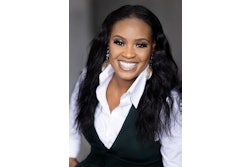HATTIESBURG, Miss. – From a Ku Klux Klan firebomb attack on a Black storeowner to frequent marches on Main Street by Blacks pushing for voting rights, the city of Hattiesburg was a pivotal scene of racial unrest in the 1950s and 1960s.
A University of Southern Mississippi conference late last week highlighted the role of key activists and local foot soldiers who helped change the racial landscape of the South during the civil rights movement.
The academic conference, which began Thursday and concluded Saturday, included panel discussions by many veteran activists, including Lawrence Guyot, Marilyn Lowen, and Martha Noonan, members of the Student Nonviolent Coordinating Committee.
Guyot said there were many developments in Hattiesburg that gave the cause momentum, including the U.S. Justice Department’s 1961 lawsuit against Forrest County registrar Therron Lynd, who thwarted efforts by Blacks to vote.
“It’s so central because SNCC was able to bring in the National Conference of Churches and facilitate the Department of Justice in finding witnesses in the lawsuit against Therron Lynd,” Guyot said.
SNCC also began one of its first voter registration projects in Hattiesburg in 1961.
Hollis Watkins, who now lives in Jackson and was a member of SNCC, said Hattiesburg had the largest number of professional Blacks who attempted to register to vote. She said that “dispelled the notion that literacy tests were legitimate. The discretion was left solely with the registrar, who had less than an eighth-grade education.”
Dr. Curtis Austin, director of USM’s Center for Black Studies, said the conference was years in the making and was scheduled to coincide with the university’s centennial celebration.
“It focuses on the lives of people who aren’t ordinarily covered in textbooks, newspapers and songs. Ordinary normal people are the foot soldiers,” Austin said.
One of those was Jeanette Smith, who was a young, pregnant wife when the SNCC members set up in Hattiesburg. Smith said because of her condition she was limited in what she could do, but that didn’t stop her and other locals from helping.
“If they needed to buy gas … we provided housing and food,” Smith said. “We were like mothers to them.”
Robert Hodges, 23, a junior majoring in history education, said the conference allowed him to meet many of the activists he had read about in books, except one.
Hodges said he wrote a term paper on Vernon Dahmer, a Black storeowner who was targeted by the Klan for his voter registration work. His store was fire-bombed in 1966. A murder conviction didn’t come in the case until 1998 when former Klan Imperial Wizard Sam Bowers was found guilty by a Forrest County jury.
“How could the justice system in Mississippi be so corrupt?” Hodges said referring to previous trials held in the case. “They’re supposed to be judges and judge the facts, not the color of a person’s skin. It really broke my heart.”
Austin said the conference will conclude with a session commemorating Clyde Kennard, a Black man who was wrongfully accused of a crime after he attempted to enroll at USM in 1959, when the college was all-White.
Kennard, a Korean War veteran, died of colon cancer shortly after being released from prison in 1963. A Forrest County judge threw out his burglary conviction in 2006.
“Kennard was one of the early people who showed the rest of us that there are things we must do, knowing all the time it might be a risk that would lead to us losing our lives,” Watkins said. “But someone had to take the risk.”















